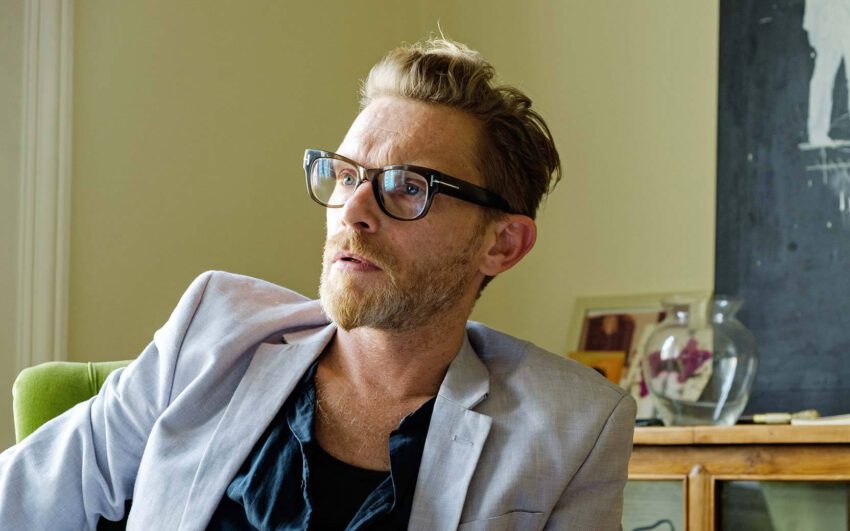Dealing with different forms of expression Swiss artist Lori Hersberger reflects the relationships between reality and illusion, space and architecture as well as the dialectic of chance and intention in his art. His works move between destruction and stability and push colorfulness and atmosphere to luminous extremes. Hersberger has always worked with various art techniques never losing sight of the connection to his oeuvre as a whole.
Lori, we are in Wädenswil, a small village near Zurich. You were born in Basel, spent your childhood and youth there, but have lived and worked in Zurich for almost twenty years. As a renowned artist who works internationally, what keeps you in Switzerland?
I haven’t lived here continuously, I lived and worked for several years in Berlin, and as a young scholarship holder spent time in Paris and London, checking them out. I belong to a generation of artists who realized quickly that regional appreciation and local collectors are not sufficient in the long run. As an artist it is necessary to consider the international context before committing to work locally. Having said that, I certainly experienced moments when I’d had enough and needed to leave for a while. Ultimately, I am an artist who finds the work of art in the studio, and who draws ideas from work. I find works in both the ongoing process and in memory. Switzerland, Zurich in particular, offers a lot.
Your studio is more than just a production site, it is large and well-lit. What is essential to you in your workspace?
I see my studio as a trading center for ideas and commodities; it is a place where I try to breathe certain magic into banal materials.
The studio is my world, it gives me the freedom I need. The studio is the theater that I have created myself, where I am the leading character, the director, and the audience in personal union. Essentially, this allows me to set and adhere to my own rules, structure my time meaningfully, and confront myself. Light, size, silence, and acoustics are important to me. I need space and well thought out logistics. I don’t want to be restricted, because my painting is larger than the door of my studio. Since I work with a broad palette of artistic media the space has to serve many demands.
That brings us to an important point: You work with a great variety of media, therefore your work doesn’t easily fall into a particular category. You began with video art, today you work with steel sculpture, installations, neon light, and painting – what do you want to achieve with this variety?
Free and unlimited choice of media is one of the important requirements for an artist. Considering I have been an artist for twenty-five years, the range of forms of expression I have used is not that large. Perhaps I may be asked to re-stage what may be regarded as a “historical” video installation in an institutional context, but in actuality I concluded work in this area twenty years ago in 1998. I do work with different media, but not continuously and almost never simultaneously. However, I don’t work in just one media only to suddenly abandon it for another, rather there are phases during which I work more intensively in one form then in order not to get stuck in a routine I may switch and begin with a new medium. I am a painter and a sculptor. I have nothing against terms such as multimedia, or installation artist, nevertheless reduced to the essential, in art there exists only painting and sculpture; in short, ultimately everything is painting and sculpture.





How did you eventually arrive at painting?
In the late 1990s, I undertook a real paradigm shift away from electronic media to the classical form of expression painting, then later through an exploration of the material into working with plastic. In my parental home, I had an early exposure to art and it occurred to me that artwork can easily degenerate into a commodity. At that time in the early 1990s, painting was probably the last thing I wanted to do, at the time I considered the idea of a unique piece (one-of-a kind) to be inconsequential. Today I see it differently.
You haven’t exhibited any new paintings for quite a while. The canvases in the studio are either older or unfinished works, or new ones that you’ve just begun. After having taken a long break in painting where do you pick up? The processes of art creation can change.
Yes, of course. Painting is an area in which very specific, media-immanent problems have to be mastered, while very different challenges exist in sculpture and three-dimensional art that have to be solved. Neither form of expression can despite their difference be considered in isolation from one another However, in my head I’ve never really stopped painting. But at the moment I am waiting until I am clear about which direction to take and when I want to go public with it. That might take time.
An inner conflict: I would like to paint again, but perhaps I am not quite there yet?
These questions certainly emerge all the time. Do I have still many other interests that keep me from pursuing it seriously? How can I get ahead with it?
The media that you use have very different demands. How do you deal with that?
What demands? Theoretically I could do anything. I have made art too long in order to simply try something else and expect that something is going to happen. My oeuvre is mature; I reflect very carefully on what I can add. The question of timelessness is really important to me. Ultimately it’s important to develop one’s own language regardless of the medium.





Why is painting as a form of expression still valid today?
Painting is important because its structure – canvas, color – is technically uncomplicated, in contrast to the unlimited forms of expression that it offers. The more limited the technical tools, the more options open up. The possibility of painting is actually that it ultimately remains impossible. This relationship makes painting so significant and attractive. It seems essential to maintain a certain humility towards art. Everyone, who paints a picture, is somehow still in contact with Michelangelo.
Looking around here one thing in particular attracts one’s attention: Your works radiate. There are reflecting and shiny surfaces, fluorescent colors on canvases – a variety of very different surfaces.
Surfaces are fascinating because they can be both banal and profound. In or behind them there always hides the other, perhaps it may be something quite profound. For me the surface represents everything or nothing, it can be both the truth and deception. Surfaces can attract, satisfy, and at the same time repel. In the visual arts where the visual dominates the surface represents the most immediate ambassador for the access to the viewer’s senses and impressions.
So, there is an immediate association with a certain tactile element?
There is an inevitable fascination with the haptic character of the work. Every artist must be aware that the uppermost layer of their art directs the perception of the work from its beginning towards a certain direction. Later, in time, the work may also be perceived in terms of semantic and personal meaning.
As soon as your works become accessible, public perceptions emerge over which you really have no control. How do you deal with interpretations of content and of descriptions that you didn’t have in mind nor intended?
It’s inevitable that viewers will come up with their own interpretations regarding content even though they are insufficiently familiar with the material. A qualified interpretation can therefore only be achieved through knowledge and experience which requires some effort on the part of the viewer. An artist is a scent layer. The content of his art is generated from the material and not the other way around so there is actually no content in an artwork, although the viewer is always looking for indications. Language should verify what is sought, but while the artwork is a fact, because it remains immediate and verifiable, interpretations of content are limited to speculation and language.
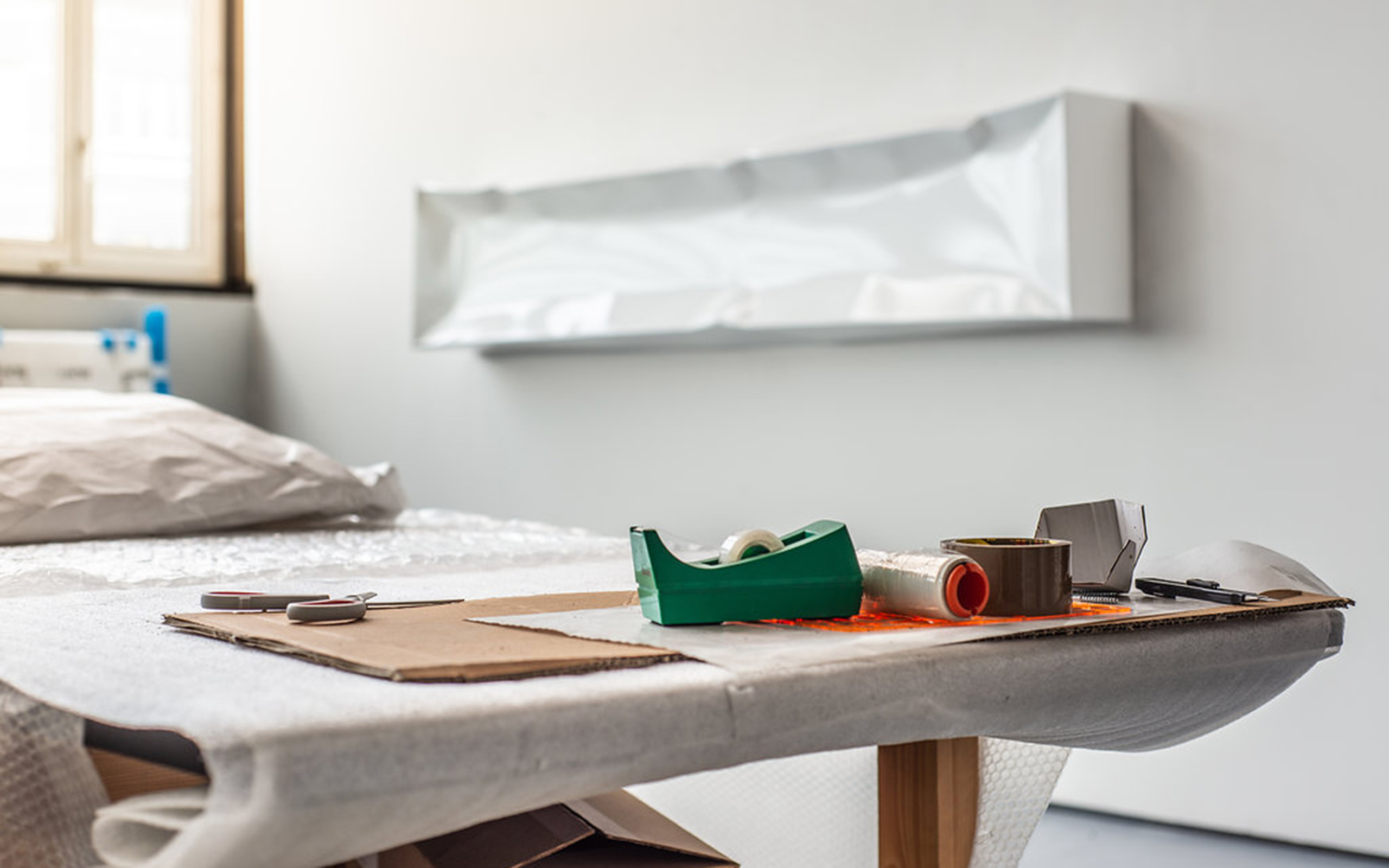


So you don’t try to formulate formal references or possibilities of interpretation?
I do, as a rule I do it through the title that I give a work. Without this reference from me a substantial part is missing for the interpretation of a work and my intention. The irony of a title must be taken into account. Horizontal formats almost always describe landscapes, vertical formats always figures; painters can hardly avoid this. But there are different variants. The interaction between form and content is perhaps only an indication. It provides a potential even today to continue to work with already well-worked media. Which direction I take is my decision. Essentially I demand adventure.
You confront your viewers often quite brutally with your work and with themselves, for example in the case of your mirror works.
Absolutely, my large works have a claustrophobic effect. The mirror confronts the viewer initially with the question: Am I a unique piece or is there a copy that resembles me? And if so, are there endless copies of myself? The use of mirrors enabled me to address the question of the uniqueness of the forms, which may also be grotesque. Each viewer can recognize in my mirrors that they are part of the artwork, even if only fleetingly.
With the mirrors you move away from the classical concept of the image carrier. What is decisive?
Including the real space, the architecture is very decisive. To be more precise, the impact of the mirror is an attempt to destroy the idea of finality, of veracity. In painting I was searching for a more radical surface, a substitute for the white canvas, for a picture carrier that has even less characteristics. That is why I painted on mirror picture carriers between 2000 and 2007.
You work a lot with intense colors. As with your paintings, in the case of the neon-light sculptures one is confronted with extremes, in this instance the previously mentioned exaggeration is quite explicit.
I have been using fluorescent colors since the late 1990s. They are the artificial form of a color that originates in nature. Luminous yellow is still yellow. According to classical color symbolism the reference to the sun and to the divine remain unchanged. Ultimately, an artificiality is generated that is able to represent the urban and chemical in an exaggerated, almost hysterical manner. Fluorescent color also serves as a caricature, a distorted impression of color. Fluorescent colors radiate a superfluous charm. They are a hybrid able to appear as both cheap and pure art and radiating something sublime and otherworldly.
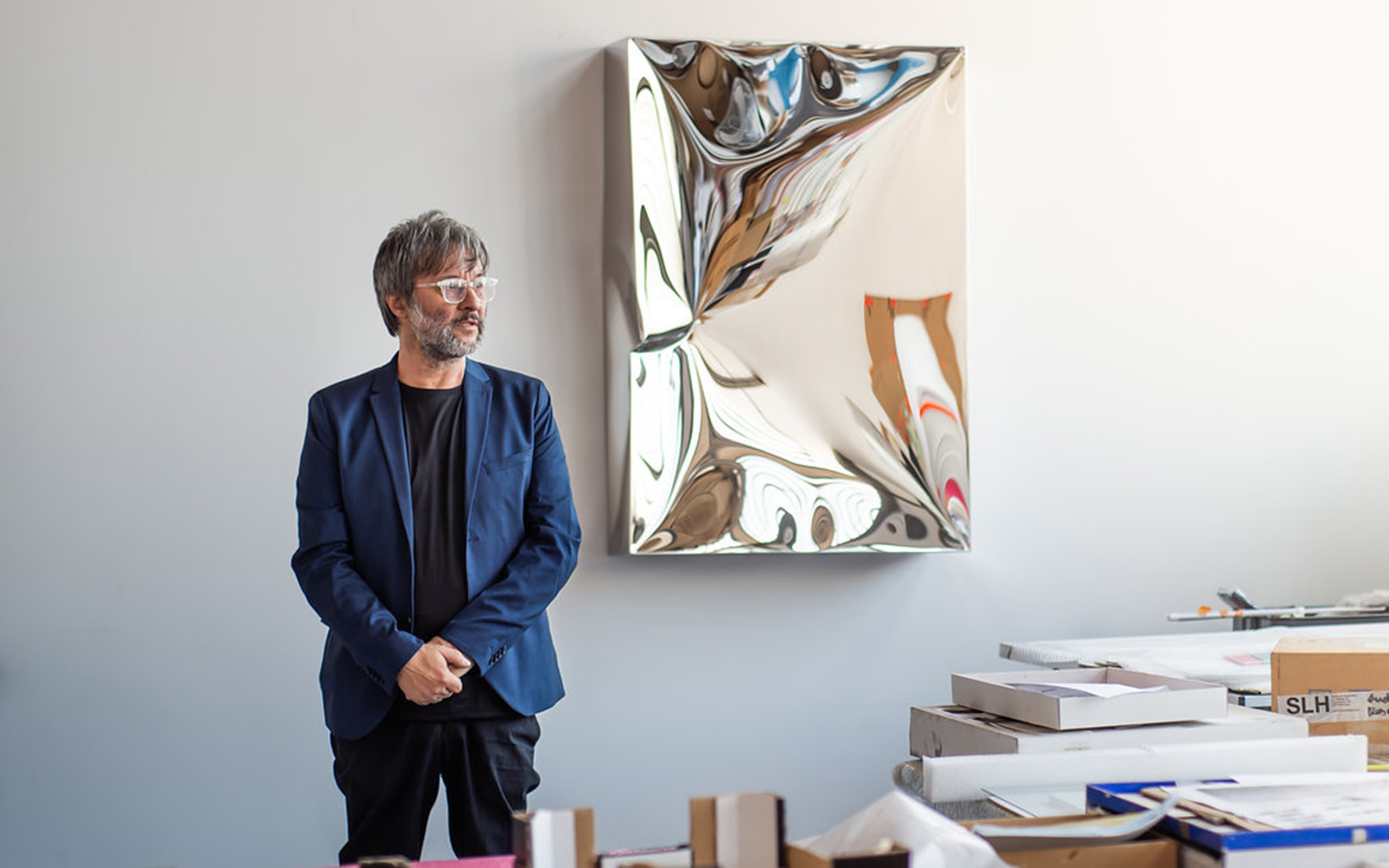

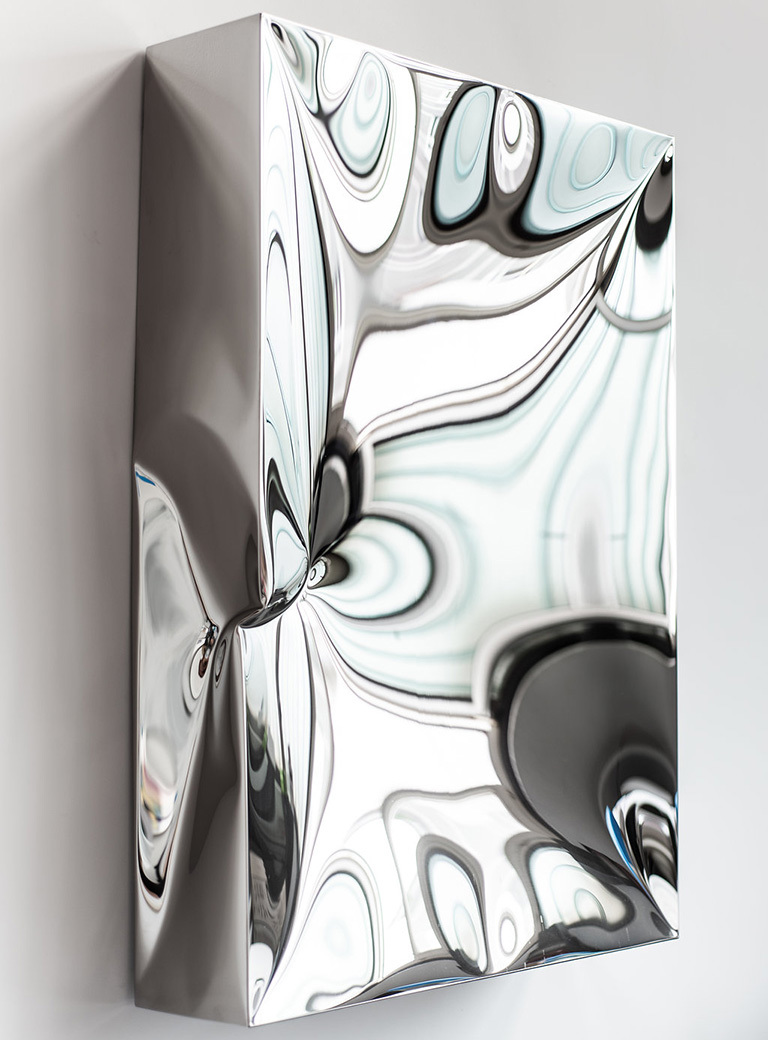
How do you combine these complex ideas in new works? Do you consider yourself a spontaneous artist?
I certainly always try to approach a new thought or option as spontaneously as possible. Although at the same time, I can’t strike a new path without accepting risks. Work series develop in this dialectic of the deformation of steel bodies through the intervention of air. Air is removed from the closed volume until the airtight welded body collapses/implodes. It is a gigantic effort to prepare for the finale where everything is decided in the space of a single moment.
The element of chance can only influence you to a certain extent.
There is an element of romance between chance and intention, both luck and control are of equal importance. Chance alone doesn’t lead me to my goal: in the course of the undertaken processes there are too many intentions and always new discoveries. Therefore, I often paint many canvases simultaneously, sometimes several dozen. When I paint, I generate multiple drafts, which become lost in cascades of endless possibilities and variants, as in a state of rapture. Then painting becomes thinking. If I were to work on only one painting I would not be able to endure the necessary processes. Fear of failure has from the beginning given me the courage to dare to take brave steps.
How do you know that the point has come when a work is complete?
To recognize the final point of completion is perhaps the most difficult part in the creative process. There is no time plan to rely upon. To begin is difficult enough, because there are worries and fears to overcome. But to declare the form as completed is even more difficult. In the case of the steel object that has been deformed by air, then the moment of that intervention coincides with the artwork’s final expression. This declaratory action on the conclusion of the artistic process is an intentional and vital conceptual aspect of my work.
What has art to trigger to enable it to function?
It has to show the contrast and contradictions of the superfluous. I am always electrified when art is both great and ridiculous. I believe artworks upon which have been placed very big demands have already arrived at the ridiculous. A work that is unable to endure these contradictions or attempts to question them quickly loses its meaning for me. Time is the greatest condition of life and the artist ultimately tries to overcome it. My creed is: The artist must be exploited by art: and the artist must in turn exploit art.


Times are changing in the art world, sales are handled increasingly via digital platforms. How do you see the future?
The upscale art market will continue to function as at present showing works in their spaces as will art fairs on the occasion of important events. This will probably not change in the near future. However, I believe that the traditional models will sooner or later reach their limits. Who is able to develop new concepts? As a gallerist one should be quite clear about whether it is really worthwhile to aim at superlatives. I imagine that in the future one would be more successful with greater precision in quality and with an increased authenticity.
Authenticity is recognizable in the original. You don’t feel/think that sales will adapt purely to online marketing?
It is well known that the relationship between artist and galerist is often precarious and difficult. Digital cross-linking will eventually force a rethinking in marketing. I could actually imagine that other marketing forms will establish themselves like for example direct marketing by the artists themselves. The demand will decide the future direction.
What would you still like to do for your oeuvre?
I believe that only at the end of an artist’s life can it really be determined what will achieve meaning beyond the artist’s own judgment. Only then will it be seen what has been achieved. The greatest attainment of the success of an artist consists not in figures generated in the market but whether the artist has pursued their own artistic path until the end. The aim is always autonomy and freedom. Even if these ideals cannot be attained and remain illusory, they still represent the background of my actions. If art wasn’t also a kind of self-medication, or if it could not help me to gain knowledge about my existence and being, then I would have problems with motivation.


Lori Hersberger, Bag Day Deluxe No.3, 2014
Photo: Studio Lori Hersberger

Lori Hersberger, Bag Day No.20, 2014
Photo: Studio Lori Hersberger

Lori Hersberger, Before Synthmesc, 2017
Installation view “Lori Hersberger - Before Synthmesc” Collectors Depot, Pörtschach b. Klagenfurt
Photo: Studio Lori Hersberger

Lori Hersberger, Geist, 2006
Installation view, “Lori Hersberger - Geist", 2006, Grieder Contemporary, Berlin
Photo: Hans-Georg Gaul
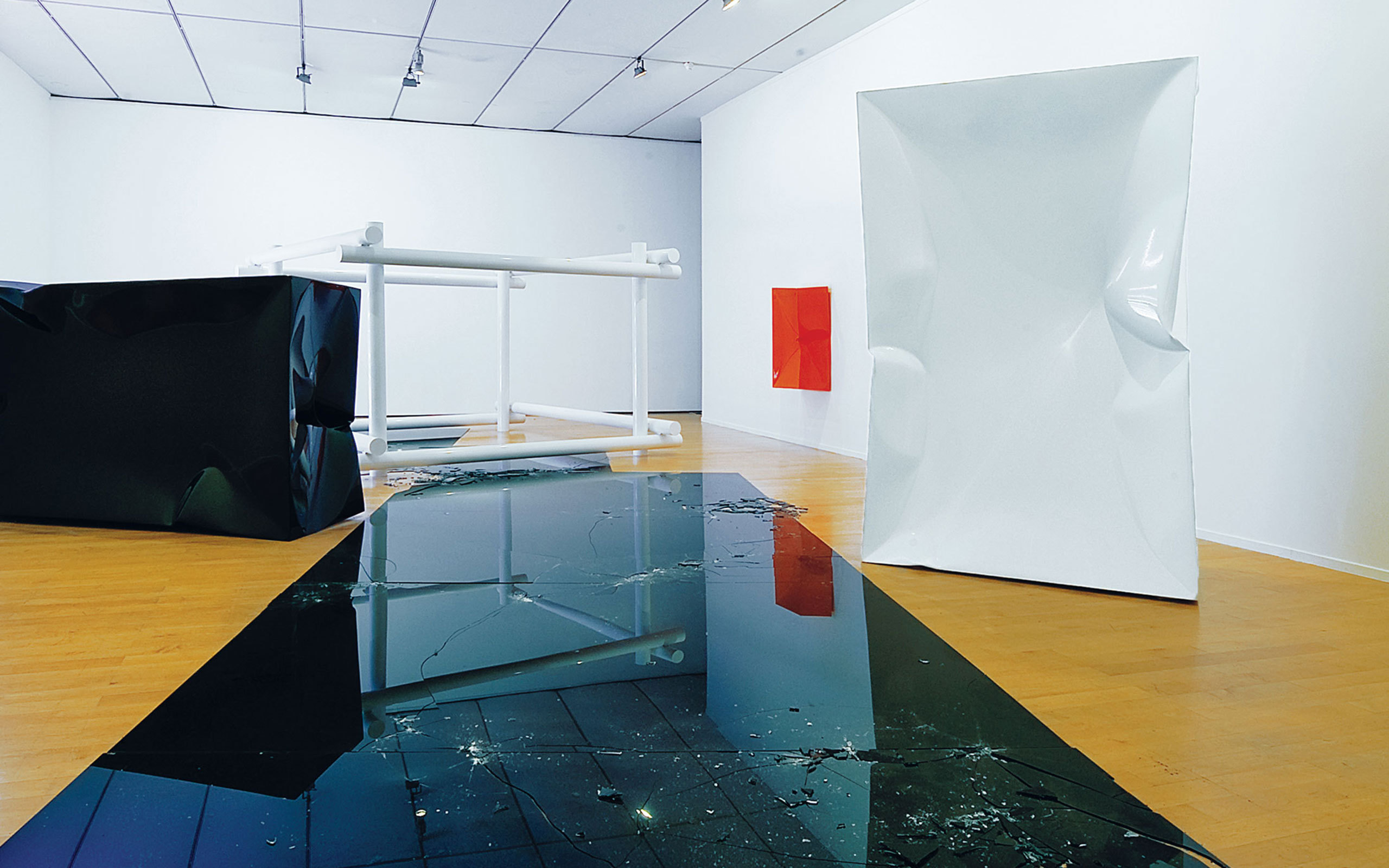
Lori Hersberger, Sudden Death, 2008 Ausstellungsansicht “Lori Hersberger - Phantom Studies”, 2008, MAC Musée d’art contemporain Lyon
Photo: Blaise Adilon

Lori Hersberger, Ghost Rider, 2008 Ausstellungsansicht “Lori Hersberger - Phantom Studies”, 2008, MAC Musée d’art contemporain Lyon
Photo: Blaise Adilon

Lori Hersberger, Sunset 164, 2006, Installation view, “Lori Hersberger - Insideout”, 2006 Galerie Mehdi Chouakri Berlin
Photo: Hans-Georg Gaul

Lori Hersberger, Totem Deluxe, 2018, Urnertal, Reussen bei Andermatt, Schweizer Alpen, with the collaboration of Galerie Clemens Gunzer Zürich
Photo: Studio Lori Hersberger
Interview: Lisa Thalmeier
Photos: Michael W. Kimmel




